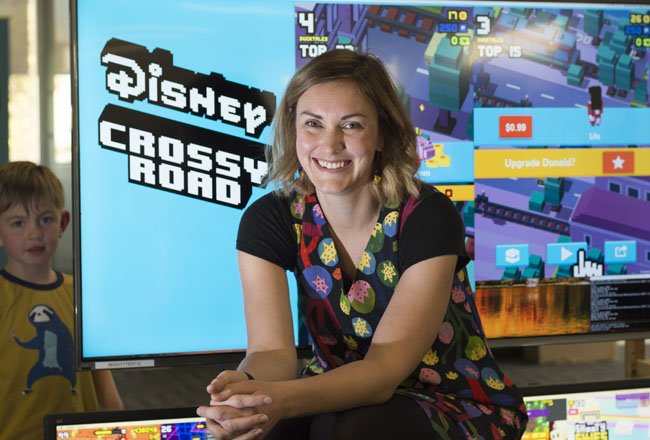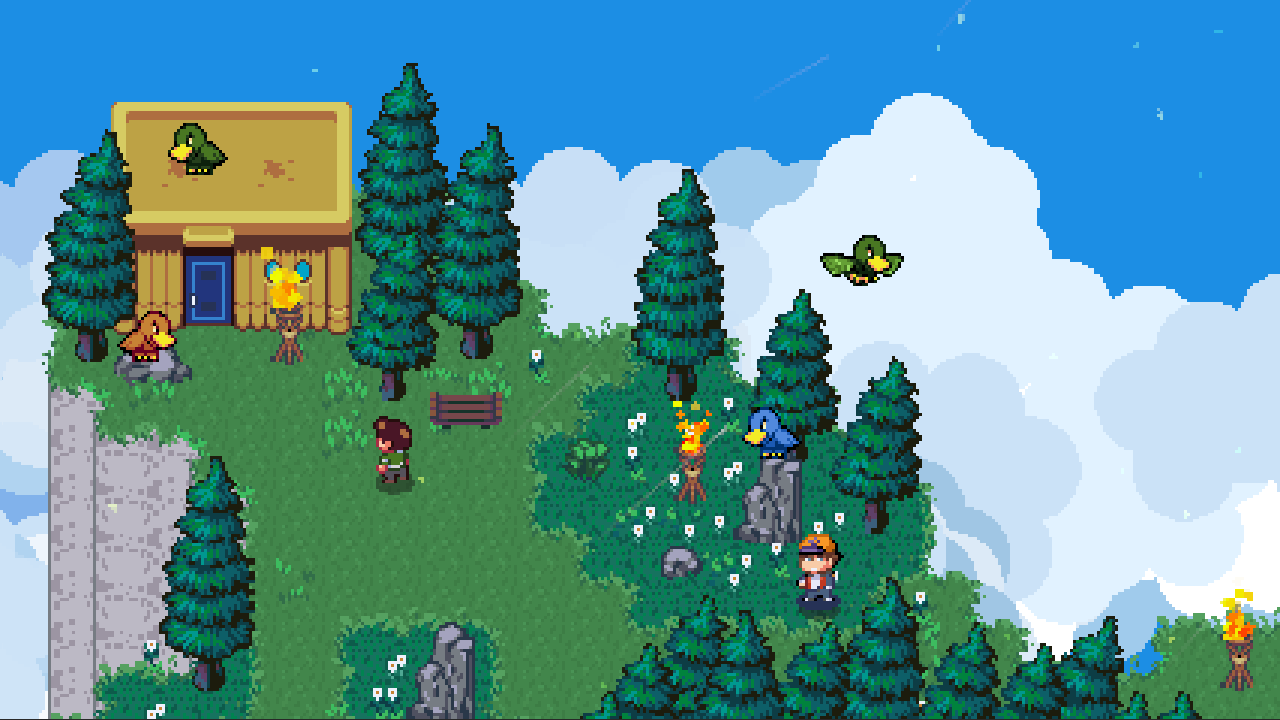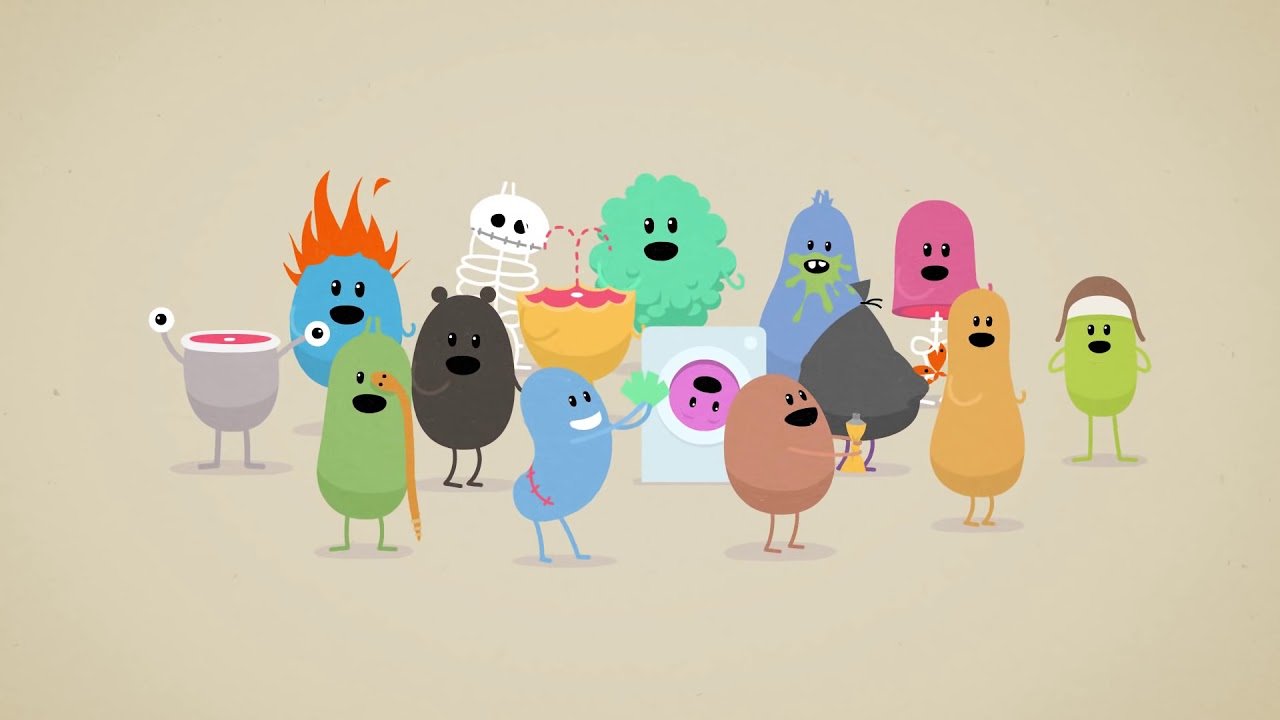
Melbourne International Games Week (MIGW) took an introspective tone this year, with numerous ongoing conversations across the Australian developer community about the past, present, and future of the local industry. Laying beneath the great success of Australian indies over the past decade, it seems, there sits a subtle anxiety about where things are headed next and how to better the game-making landscape for new and old voices alike.
This very much fit the theme of the week’s central event, the Game Connect Asia Pacific (GCAP) developer conference: “the walls we’ve built ourselves” — a reference in part to the bootstrapped nature of the Australian industry’s rebound from a near-total destruction during the global financial crisis (GFC), which sent the Australian dollar soaring (a bad thing when nearly all your money comes from US sources) and wiped out local giants Krome, Red Ant, Pandemic, and De Blob makers Blue Tongue, among others, causing a mass exodus of talent overseas and to other industries.
The developer talent that stuck around mostly formed into clusters of small teams — many of whom now share offices in The Arcade co-working space in Melbourne — that could take on the world with indie games (the local market is too small to sustain any studios long-term, so when I say “world” I mean it — US and China make up the bulk of sales for most Australian-made games). They’ve since built up an impressive indie-focused industry of a couple of hundred or so studios — not bad for a country of 25 million people.

In a panel discussion at PAX Australia about 10 years of app gaming, Hipster Whale president Clara Reeves suggested that the key to this indie-led resurgence was a perfect storm of technology and situation. New tools like Unity are making it easier than ever before for small teams to make high-quality games cheaply and quickly, she said, while the GFC had freed up (or forced) the best talent to go at it alone and new platforms like Steam and the App Store made it possible for them to reach a huge potential audience through digital self-publishing channels.
For early App Store success stories Halfbrick and Firemint, in particular, this made a huge difference. Both studios had been around before then — two smaller, nimbler survivors of the GFC fallout — and both decided to give the App Store a go. For Firemint, this meant studio head Rob Murray tinkering with a game idea over the Christmas break — a game that would become Flight Control — while for Halfbrick it involved prototyping a game about slicing fruit while they pushed to market their new Xbox Live release Raskulls.
“I’d be surprised if we even had an industry [in Australia] if there wasn’t an App Store,” said IGDA Melbourne director and Hipster Whale business administrator, Giselle Rosman.
Mighty Games co-founder Matt Ditton recalled that Halfbrick had told him before Fruit Ninja‘s release that iOS was a no-brainer simply because it had a 30-day payment term, which meant they could generate revenue to keep the studio afloat while they waited out the several months it would take for Microsoft to send the first Raskulls royalty payment.
Fast-forward to today and Aussie indies continue to be heavily-reliant on App Store revenue, but now also many — such as Armello developers League of Geeks and Hand of Fate studio Defiant Development — thrive on Steam and a few — most notably Death Squared developer SMG Studios (who sold more games on Switch in three days than PC, Xbox One, and PS4 combined in six months) and Golf Story creators Sidebar Games — have topped charts on the Nintendo Switch eShop.

The local industry has done well to diversify its business since the GFC, and to hold onto its own intellectual property — which is perhaps a good thing, given continued hand-wringing about possible “indiepocalypse” (or post-indiepocalypse) fallout worldwide.
LDB Accountants & Advisors partner, Luke Henry, took some time out during MIGW to chat with me about the big picture of the Australian game industry from a business perspective. His firm represents “somewhere between 40 and 50 studios” in the country, ranging from small startups straight out of university through to some of the region’s leading studios. Henry noted that these days there is no particular revenue model that works for local studios.
“There’s a constant need to reinvent and try new things,” he said. And for many of the studios that succeed, he added, “oftentimes it’s just this dogged persistence of keeping it and trying new things that’s let them find the secret formula that applied at that particular point in time.”
The tricky thing — and not only for local studios, but for indies around the world — has been figuring out how to replicate that first success. To build on it and create a longer-term financial security.
“There’s not too many [Australian studios] that have really got what I would call a fat tail on their revenue,” said Henry, “where they’ve been able to release a game and that game is still — two years later — selling consistently. There are a number that do that, but they’re few and far between unfortunately.”
Interestingly for Australian studios post-GFC, this has not tended to mean scaling up operations (beyond maybe a climb from half a dozen to 20-30 people). There’s a reason for this.
“There was a point where Krome Studios had 400 people across three states,” said Ditton, “which is a gigantic bill every fortnight. So they became very susceptible to this big sweeping change.” Local developers took note, and Reeves and Mountains creative director/Monument Valley designer Ken Wong noted that there’s a preference now among Australian studios to stay small and nimble — in part because they’re cautious or fearful that scaling up could leave them vulnerable to the machinations of a fickle market that changes constantly and in part because of a broader change in attitudes over the past decade.

Wong added that the rise of indie games around the world made many developers question the need to have hundreds of people working on a single game. “I think the attitude now is that you can make games at a smaller size, and I think people are a bit more cautious,” he said, regarding how studios scale up, especially now that you also have boutique publishers, like Devolver Digital and Australian “alternative folk” publisher Fellow Traveller, that would rather work with and help small indies than “swallow up games and developers and IP.”
Infinite Interactive founder Steve Fawkner added that modern revenue streams (from free-to-play games and downloadable content) make it easier to manage budgets and staffing than in the old hit-driven economy, where you had to hope you had enough money from your last successful release to pay the bills until the next one. Rosman said that it helps, too, that most Australian studios now own the intellectual property rights for the games they work on (which wasn’t the case a decade ago). “But discoverability on all of the platforms is [now] really difficult,” she conceded.
This gloomier comment echoed a remark from Defiant Development creative director/co-founder Morgan Jaffit during the closing keynote session at GCAP, earlier in the week: “Mobile started that whole set of wheels rolling, and the thing is, if you look around, mobile is a pretty tough place right now,” he said, adding that Steam and the Switch likewise gave indies a boost but are also “a pretty tough place right now.”
“There are new waves and opportunities,” Jaffit continued, “but it also feels like there’s a lot of us leaping into the new waves and opportunities. And maybe AR will be filled with content before AR even arrives. There are lots of tough places right now.”
For Henry, the studios that thrive in this saturated market will be the ones that either iterate on their ideas until they find fresh new concepts or business models, or that manage to capitalize on new opportunities — like B2B (business-to-business), the Internet of Things, big data, and gamification.
There’s real money going around in the serious games and B2B space for indies right now, Henry suggested, citing the viral success of Metro Trains Melbourne’s Dumb Ways to Die series (made in collaboration with various game studios — most recent PlaySide) as a great example of the B2B revenue available for games that facilitate educational engagement, and the growing recognition of this as a viable opportunity for indies was perhaps best reflected in the unusually-high number of sessions related to serious games at this year’s GCAP.
“You’re [also] seeing the likes of [Earthlight developer] Opaque doing really great things,” Henry said, “and there’s not going to be room for everyone to be able to do what it is that they do, but you can see there that there’s a really successful business behind the scenes that can really launch what I would call a nontraditional studio.”
Wong put a more nuanced view forward in his speech during the GCAP closing keynote. Games have grown up now, he argued, out of the countercultural vibe they had in the 1980s and 90s and into the mainstream. They aren’t rebellious as an art form or entertainment medium any more, but they could be.

“I think the rebellion video games need now is one of caring,” he said. “This morning, during the lightning talks, [industry veteran and Riot Games senior engineer] Tony Albrecht asked us to ask ourselves if what we’re doing is useful. The real rebels will make games that help us understand each other and make the world a better place.”
At PAX, Wong added that this changing relationship games have with the public means “we’re being forced to create more accessible experiences and to question what types of games we’re making.” Because on mobile, especially, your game could be played by anyone — even the self-described non-gamers who just happen upon games and pick something to play as they’re browsing the App Store.
Despite the fact that Australian teams created some of the biggest indie hits of recent memory — including Armello, Golf Story, Hand of Fate, Crossy Road, Monument Valley, Hollow Knight, and more — there’s a curious sense of introspection to the local industry. Far from believing they’ve got it all figured out and can weather whatever storms lie ahead for the game industry, GCAP was marked by a soul searching vibe, like the country’s best developers don’t know quite how to grow the industry from here.
In part it’s that indie anxiety coming through again, summed up succinctly by Reeves in answering a question about discoverability at the end of the 10 Years of App Gaming panel — “Every six months a rug is just pulled out from under you.” — and alluded to by Henry when he theorized to me that the fluctuations of the Australian dollar will dictate what the opportunities are for developers both large and small working in the commercial space (including possible formation of a few Australian branches of major US studios, such as the recently-announced Epic Games Australia/New Zealand).
But also it’s perhaps something of a mini-identity crisis, with many local industry leaders wondering who’s being left out of the discussion — because they feel unwelcome or can’t afford the cost of admission (be it to these events or to publishing on the major platforms), or because they’re missing out on the valuable resources being shared within closed channels.

Australia’s leading indies seem painfully aware of their position of privilege, and if the discussions of Melbourne International Games Week are anything to go by then there’s a determination among them to not only bolster the walls that protect the local industry from a second collapse but also — to borrow Wong and Jaffit’s metaphors — to build bridges and doors and windows that welcome new voices, champion the underdog, and make more connections between developers.
Because “you’re not safe when your door only lets in people you know,” Jaffit argued, and because diversity might just be the buffer that Australia’s game industry needs against the breakneck pace of change affecting every facet of game making worldwide.
 GameDaily.biz © 2025 | All Rights Reserved.
GameDaily.biz © 2025 | All Rights Reserved.